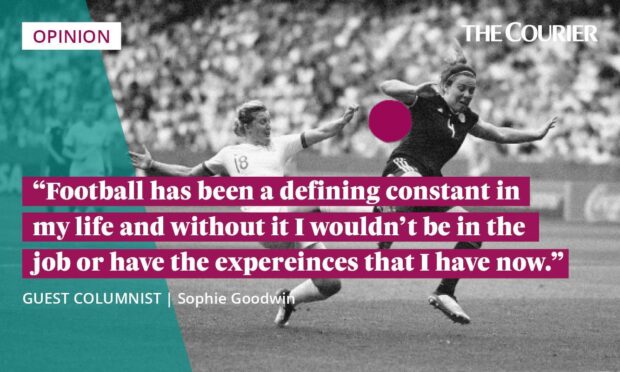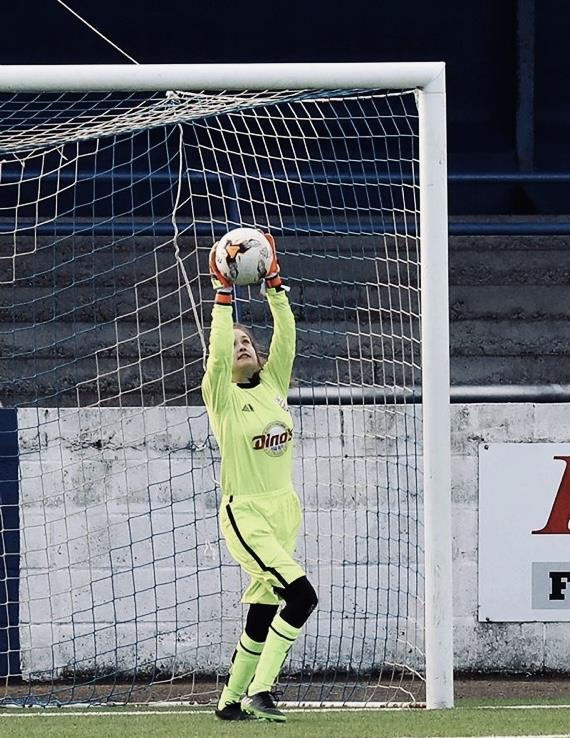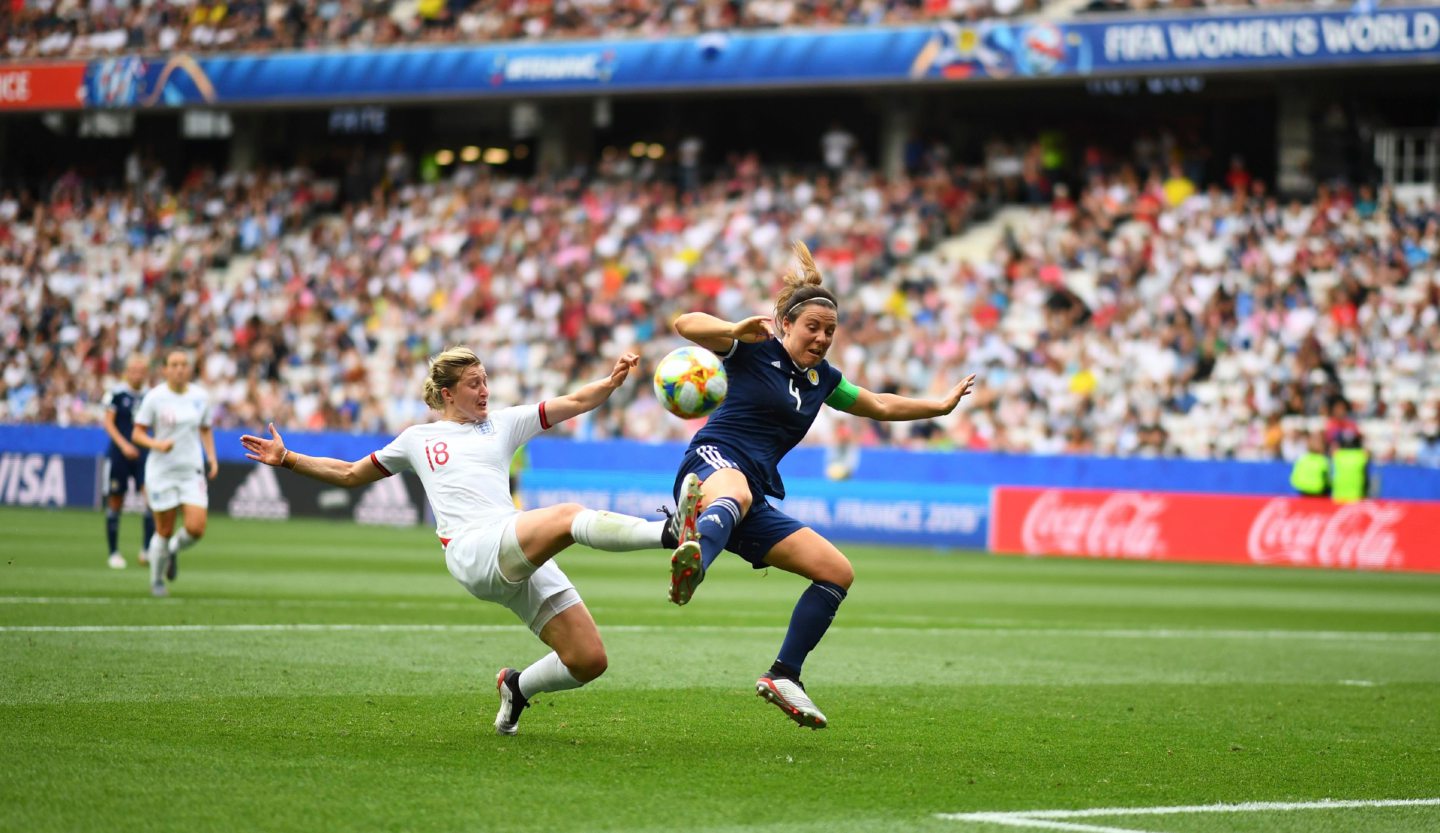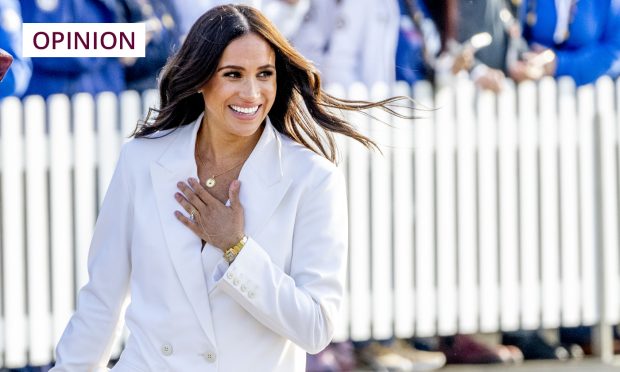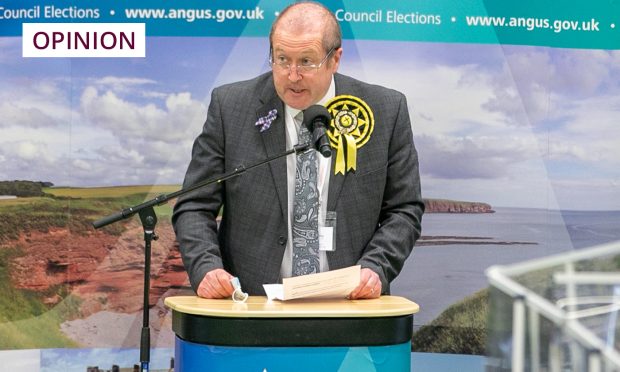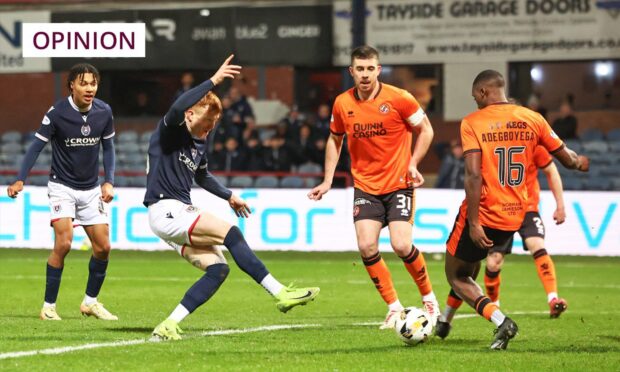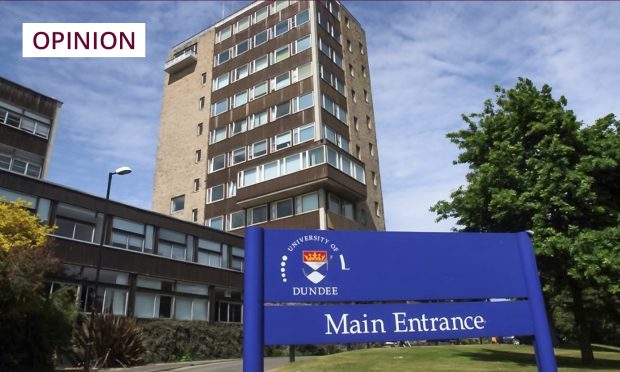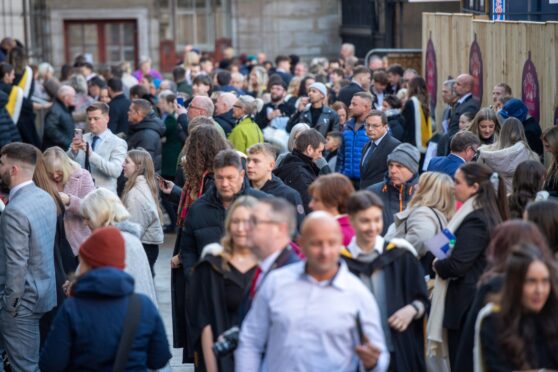I’ve been involved in football for over 13 years either as a player or now as a sports journalist.
Football has been a defining constant in my life and without it I wouldn’t be in the job or have the experiences that I have now.
However, my experience has not always been positive.
I wasn’t surprised to see that 71% of women who participated in our Impact survey have also experienced, or been witness, to discriminatory behaviour.
Collective action
I’ve written at length before about the abuse that I experienced on the pitch as a kid playing in Brechin, and how comments made about my body had long-term and life-threatening consequences for me as I struggled with an eating disorder as a teenager entering adulthood.
And like me, there will be plenty of other girls and women who have experienced abuse that have to live with the effect of someone else’s words or actions – while those who inflicted such pain are probably none the wiser.
The response I got to my article shows how important speaking out can be and the effectiveness of collective action.
Scottish football fans rallied around Stenhousemuir and their captain after she was subject to abuse on social media about the way she looks after their Scottish Cup game against Rangers.
Again, proof that calling out abuse can unite fans and footballers alike.
Throwaway comments about my appearance have not been the only time I’ve witnessed or experienced discriminatory behaviour.
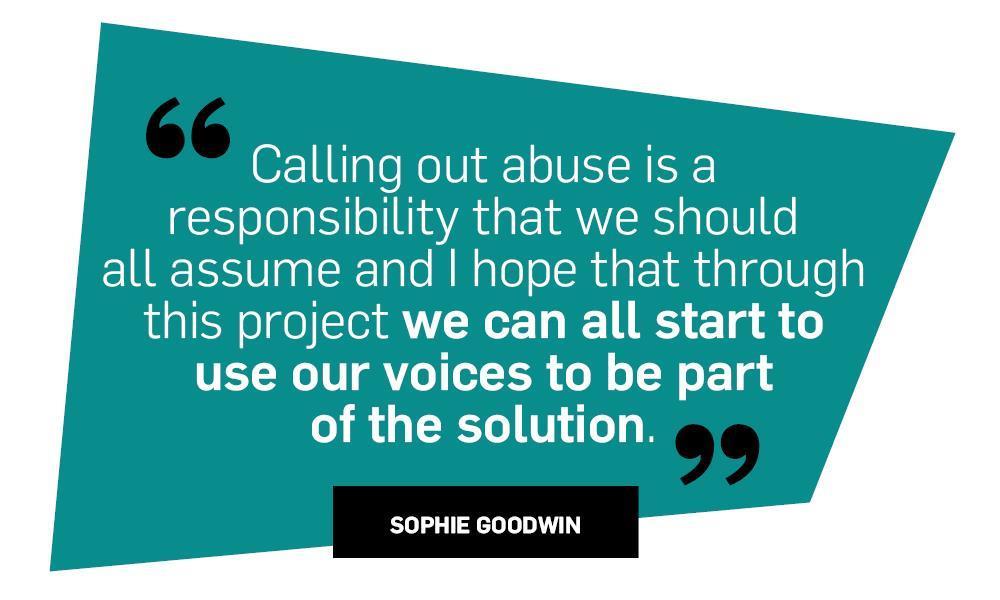
Women’s football has often been a safe space for LGBTQ+ players and a more accepting environment for same sex couples.
But I’ve been around straight players who have referred to their teammates as ‘dykes’ or questioned players being on their ‘gaydar’ as if it’s a fun nickname or game.
Calling out abuse is a responsibility that we should all assume and I hope that through this project we can all start to use our voices to be part of the solution.
And although I wish there was no this need for this project or for campaigns like Her Game Too to exist – they have to because we’re a long way off where we need to be as a society.
Statement from club captain Nicole McPhee: pic.twitter.com/DdmQvJDER2
— Stenhousemuir FC Ladies (@StennyLadies) January 12, 2022
‘I wish I had called him out’
I have to admit I haven’t always done my bit.
I’ve been on the pitch and not felt brave enough to do anything about the abuse that I’d experienced.
A 12-year-old shouldn’t have that weight on their shoulders, but I should have at least felt comfortable to go to my coaches or even the referee to tell them about the boys who were hurling insults at me from behind the goals.
I didn’t call out the homophobic remarks for fear of being outed before I was able to do so on my own terms.
I’ve been working at a game and heard abuse shouted from the stands.
One incident that sticks in my head was when a man shouted abuse while he sat only two or three seats from another set of fans – a dad and his young daughter.
“How do you run with your fat arse in those shorts?”
Nobody said or did anything about it.
What kind of message does it send to that young fan if a man thinks it is acceptable to solely judge a female player’s ability on her appearance?
I wish I had called him out.
I’m not alone as our survey found that 74% of the female participants who had witnessed or experienced discriminatory behaviour had taken no further action about any incident.
One player told us that while playing football with a group of boys she experienced discriminatory behaviour, but she felt that taking action was too big a risk in case ‘people turned on me’.
I know that feeling of intimidation all too well.
I was too scared to call out the abusive fan at Balmoral Stadium in case I created a scene.
But that’s what I’m doing now.
A better environment for future of football
It’s time to call out any form of abuse in the women’s game.
It’s not all doom and gloom.
I was genuinely emotional when reading some of the survey comments that young players wrote.
Some told us that football is the best thing to ever happen to them and their desire to one day go professional.
I share their optimism and the fact a job like mine exists where my main responsibility is to cover SWPL 1 and Aberdeen Women is evidence of progress in itself.
My job has given me the chance to speak to my own footballing heroes, and I regularly chat with young players who I believe will be what Rachel Corsie is to me to the future generation of footballers.
But work still needs to be done if we’re to create a better environment for those following in Corsie’s footsteps.
And not only for future footballers, but also for those who want to work in football or people who simply want to enjoy the beautiful game.
When I first got the job at the Press and Journal and Evening Express, some people told me how good an opportunity it was to progress to reporting on men’s football.
Why does my job have to be a stepping stone to the men’s game as if it would be some sort of promotion?
Making a difference
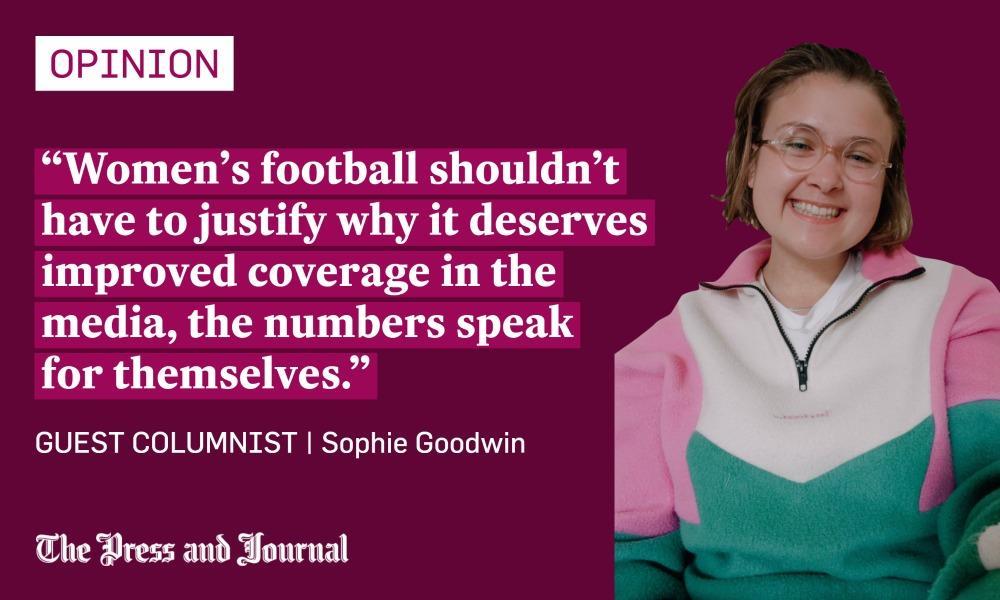 Some 63% of people felt a lack of media coverage is one of the main barriers stopping women taking part in sport, while 86% agreed increased media coverage celebrating women’s achievements in sport would help attract more participants.
Some 63% of people felt a lack of media coverage is one of the main barriers stopping women taking part in sport, while 86% agreed increased media coverage celebrating women’s achievements in sport would help attract more participants.
I hope the work I do can play a small part in improving media coverage and I’ll always strive to do better.
But it doesn’t help when people are constantly branding women’s football as unimportant and irrelevant.
Fishing has a bigger fan base but we don't get scrolling news along the bottom of SSN about the biggest goldfish caught at FishOmania. Stick some proper news on
— Wood Lightyear (@shadynasty1989) January 27, 2022
Can you not just have a sky sports news for women so we don’t have to keep seeing this stuff
— Conventional Rudy (@ConventionRudy) January 27, 2022
Women’s football shouldn’t have to justify why it deserves improved coverage in the media, the numbers speak for themselves.
The Women’s FA Cup final was watched by 1.3 million people on the BBC while 40,942 fans watched on from inside Wembley.
28.1 million people watched BBC’s coverage of the 2019 Women’s World Cup.
Earlier this season in Scotland, the SWPL 1 Highlights Show had more viewers than the men’s highlights on Sports Scene.
Looking at those numbers, it’s quite clear to me that women’s football is neither unimportant nor irrelevant.
The issue isn’t that nobody is interested in coverage, the problem is the lack of prevalence of women’s football in the media.
It wears me down when I read on social media that people don’t want to read about women’s football while I spend my working life hoping people engage with the content I produce.
I hope our work on this project can make some sort of difference to those involved in women’s football and can play a part in changing outdated and ignorant attitudes.
Anyone who witnesses sexist abuse, harassment or discrimination, can report it in a number of ways.
You can report discrimination within Scottish grassroots football to the Scottish Football Association.
Or search for Scottish FA Grassroots in Google Play or App store.
Also, the Her Game Too anti-sexism campaign has an anonymous online form.
If you feel the form of discrimination you witnessed either on the pitch or online could be a hate crime, you may also report it to Police Scotland via 101.
Read more from this series
- Women in football: Our survey reveals scale of sexist abuse facing those who love the game
- Georgia Carter: Online abuse has to be taken seriously for women’s football to grow
- Shelley Hague: ‘Football can be a great force for good’
- Arbroath Community Sports Club Girls is real labour of love for founder Ellie
- Dave Lord: It is down to everyone involved in women’s football at every level to help ensure the future is far brighter
- ‘People watch Emma Raducanu play other young female tennis players and nobody compares it to the men’s game’
- Elsie Cook: We have to speak out against sexists. We can’t let them win
Credits
Words and interviews by Sophie Goodwin and Stephen Stewart
Story design by Cheryl Livingstone
Graphics by Carly Gilchrist
Data visualisations by Emma Morrice
Video by Drew Farrell, Kim Cessford and Gregor Aiken
